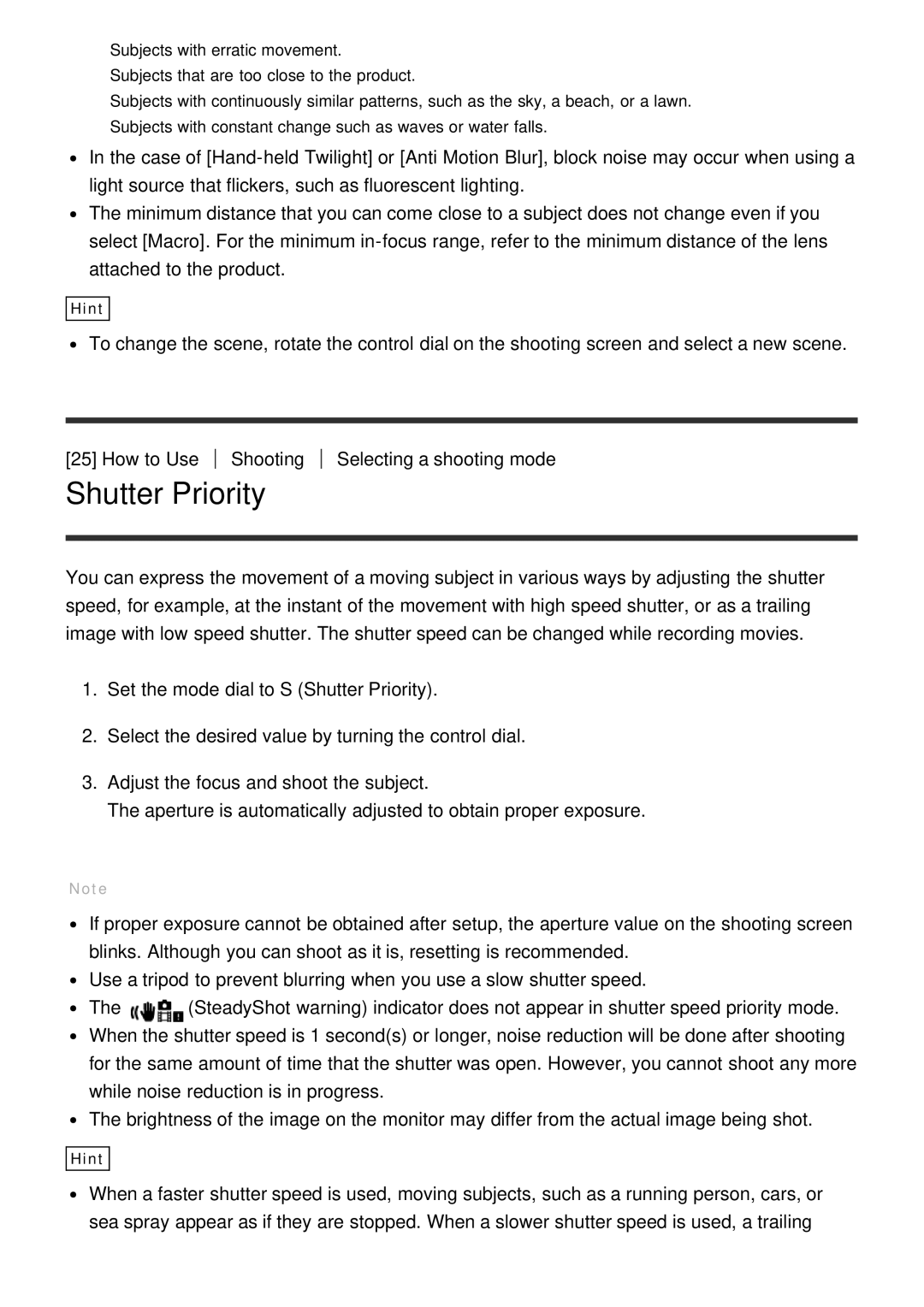
Subjects with erratic movement.
Subjects that are too close to the product.
Subjects with continuously similar patterns, such as the sky, a beach, or a lawn.
Subjects with constant change such as waves or water falls.
In the case of
The minimum distance that you can come close to a subject does not change even if you select [Macro]. For the minimum
Hint
To change the scene, rotate the control dial on the shooting screen and select a new scene.
[25] How to Use Shooting
Shutter Priority
Selecting a shooting mode
You can express the movement of a moving subject in various ways by adjusting the shutter speed, for example, at the instant of the movement with high speed shutter, or as a trailing image with low speed shutter. The shutter speed can be changed while recording movies.
1.Set the mode dial to S (Shutter Priority).
2.Select the desired value by turning the control dial.
3.Adjust the focus and shoot the subject.
The aperture is automatically adjusted to obtain proper exposure.
Note
If proper exposure cannot be obtained after setup, the aperture value on the shooting screen blinks. Although you can shoot as it is, resetting is recommended.
Use a tripod to prevent blurring when you use a slow shutter speed.
The ![]() (SteadyShot warning) indicator does not appear in shutter speed priority mode. When the shutter speed is 1 second(s) or longer, noise reduction will be done after shooting for the same amount of time that the shutter was open. However, you cannot shoot any more while noise reduction is in progress.
(SteadyShot warning) indicator does not appear in shutter speed priority mode. When the shutter speed is 1 second(s) or longer, noise reduction will be done after shooting for the same amount of time that the shutter was open. However, you cannot shoot any more while noise reduction is in progress.
The brightness of the image on the monitor may differ from the actual image being shot.
Hint
When a faster shutter speed is used, moving subjects, such as a running person, cars, or sea spray appear as if they are stopped. When a slower shutter speed is used, a trailing
